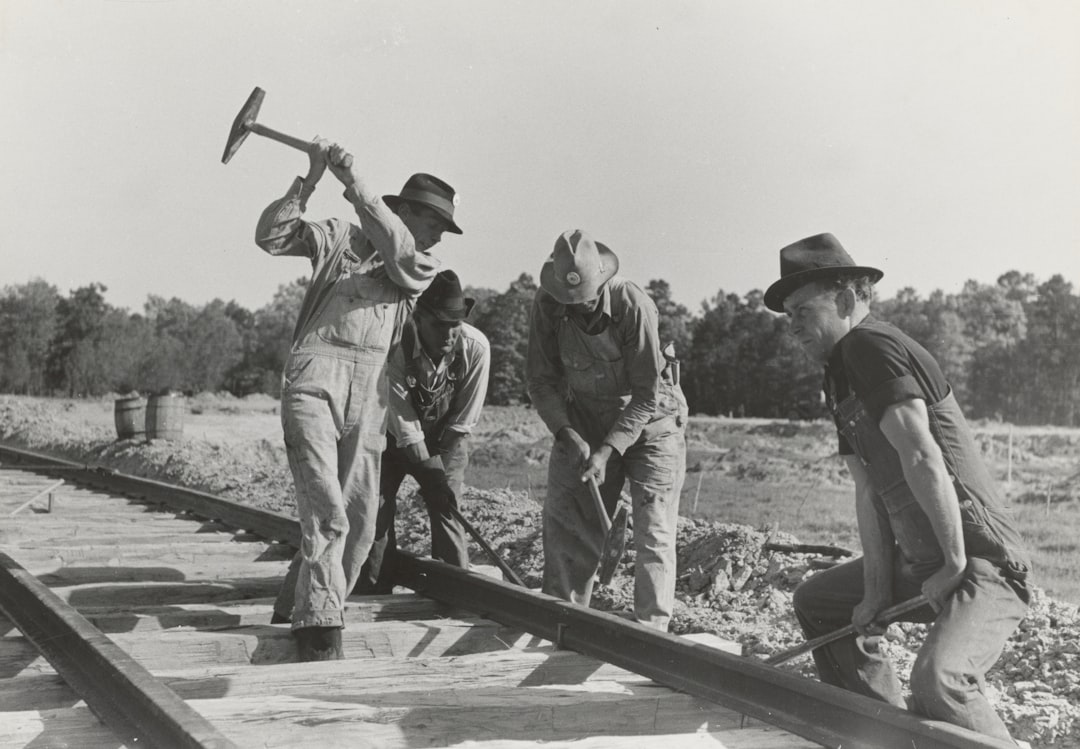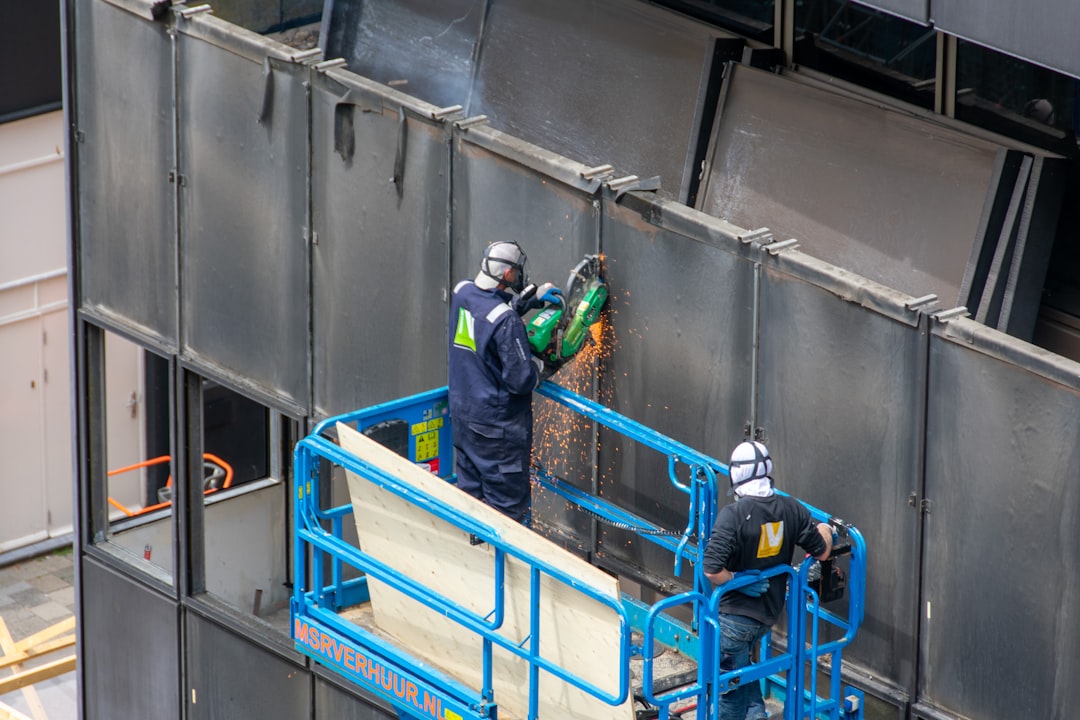

Engage prospects with a scan and streamline customer engagement with FREE QR code marketing tools by Sona – no strings attached!
Create a Free QR CodeFree consultation

No commitment

Engage prospects with a scan and streamline customer engagement with FREE QR code marketing tools by Sona – no strings attached!
Create a Free QR CodeFree consultation

No commitment
Sheetrock contractors are navigating rapid digital transformation as they face heightened competition and evolving client demands. These businesses, whether specializing in drywall installation, repairs, or managing major construction projects, increasingly encounter critical challenges such as losing out on high-intent prospects who never submit a web form or struggling to justify marketing spend without verifiable ROI. Traditional tools like printed flyers and static brochures often result in missed opportunities since it is nearly impossible to track engagement past the first touch or trigger timely follow-ups.
QR codes in marketing have emerged as a strategic solution for sheetrock contractors to overcome these persistent frustrations. Instead of relying on manual sign-up sheets or paper feedback forms, which often leave leads untracked in CRMs and hamper follow-up, QR codes transform jobsite signage, vehicle wraps, and even business cards into interactive access points. This shift enables real-time data collection, instant quote requests, frictionless financing tools, and seamless warranty registrations, helping contractors accelerate every step from inquiry to project close while capturing attribution that was once invisible.
Leveraging modern QR code platforms empowers contractors to bridge the gap between offline encounters and actionable, measurable marketing efforts. From ensuring visibility into previously anonymous traffic at every touchpoint to accelerating lead capture before competitors engage, this guide explains how QR codes drive greater marketing efficiency and improve project outcomes in the drywall sector. With tools like Sona QR, contractors can manage QR destinations, unify analytics, and tie scans directly to revenue for a clearer view of ROI across their marketing mix.

Increasingly, contractors find that relying on printed brochures or manual forms leaves valuable prospects untracked and slows down follow-up. QR codes bridge this gap so even anonymous interest, such as someone scanning a yard sign or project flyer, can generate actionable signals instantly. Rather than waiting for a formal website inquiry, scans create a moment of engagement that can trigger quotes, callbacks, or scheduling.
This approach reduces friction for customers and simplifies operations for teams in the field. Instead of juggling phone calls, voicemail, and sticky notes, crews can direct prospects to scan and enter details into structured forms, like Google Forms QRs, pushing clean data into the CRM. Managers get real-time visibility into which materials and placements are driving interest, while customers benefit from faster service and clear next steps.
As digital solutions become more sophisticated, contractors are finding that intelligent QR platforms not only streamline operations but also provide actionable insights to continually refine their approach. By transforming every physical touchpoint into an entry point for service, QR codes help sheetrock companies connect with motivated buyers faster and more effectively than traditional methods in QR code marketing.
For many contractors, the core challenge is not traffic volume. The real challenge is identifying the moments that signal buyer intent and acting on them before the competition. QR codes give sheetrock businesses a practical tool to tackle recurring pain points that originate at the physical-digital boundary. Whether someone sees a truck wrap at a stoplight or picks up a brochure in a building supply store, a scan can convert passive interest into trackable action.
QR codes also remove friction from processes customers find tedious, such as filling out long forms or searching a website from a smartphone. By pointing scanners to streamlined mobile experiences, contractors reduce drop-off and capture cleaner data tied to specific marketing assets. In turn, leaders get the attribution needed to justify budget and double down on what works.
These capabilities mark a shift away from slow, manual processes toward an ecosystem where lead capture, engagement signals, and campaign success are fully visible. Contractors can finally connect physical marketing to digital pipelines and make informed decisions grounded in real results.

Not all QR codes are created equal, and different formats suit different goals. Contractors often need to connect precise touchpoints to revenue, reduce back-and-forth phone calls, or ensure compliance with jobsite documentation. Selecting the right format ensures that the first scan translates into the desired action with minimal effort from the user.
A best practice is to standardize on a handful of QR formats that align to your most important workflows, then maintain consistent CTAs and landing page styles so customers know what to expect. Integrated platforms like Sona QR make managing multiple formats simple, allowing teams to switch destinations, segment scans, and report on performance by code type.
Integrated platforms make it easy to align each format with a clear business purpose. By pairing code type with an optimized destination and a compelling CTA, you can guide scanners toward high-value actions that advance your pipeline or improve project delivery.

High-value prospects can be lost unless sheetrock contractors actively capture interest across the project lifecycle. QR codes give you the ability to engage prospects at the moment of curiosity, whether they are driving past a jobsite or reviewing an estimate at the kitchen table. By placing codes where they naturally fit, you transform static materials into measurable acquisition channels.
Focus placements on locations where potential customers already look for information or validation. Make sure the CTA communicates both the action and the payoff, such as scan to schedule a same-day estimate or scan to view our fire-rated assemblies. Consistency builds trust and encourages repeat scanning across multiple touchpoints.
Strategically locating QR codes allows contractors to turn every touchpoint into a revenue opportunity. You not only encourage action but also capture the data needed to understand what content, placement, and timing deliver results.

Moving beyond generic applications, sheetrock contractors can align QR codes with the specific breakdowns that happen in the sales funnel and project workflow. The goal is to meet customers where they are and guide them to the next best step with as little friction as possible. When QR actions map tightly to business goals, the impact is immediate and measurable.
Consider deploying a mix of prospecting, conversion, and post-installation use cases. This creates a connected journey that begins at awareness and ends with a review or referral, all while feeding your CRM with complete data on each interaction.
Each use case targets a known friction point: anonymous offline interest, delayed follow-up, or complex paperwork. By pairing QR scans with automation, contractors remove obstacles that commonly stall deals and let crews focus on quality workmanship.
Anonymous foot traffic and offline interactions once meant lost visibility for sheetrock contractors. Modern QR code tactics let you build high-value audiences from those moments, segmenting scanners by intent and context so you can follow up with precision. Rather than treating every lead the same, you can adapt messaging to the service they care about and the stage they are in. For activation ideas, see Sona’s retargeting playbook.
Effective segmentation also supports smarter ad spend. By learning which channels and contexts correlate with closed deals, you can shift budget toward placements that consistently generate qualified opportunities. Syncing scan data to your CRM and ad platforms makes it simple to activate these insights at scale.
With Sona QR, each code can be tied to a segment, campaign, and destination. Sona.com extends this by unifying journeys and enabling multi-touch attribution so you can see how offline scans interact with website visits, calls, and proposals on the path to revenue.
Fragmented touchpoints and missing attribution have long strained contractor marketing budgets. QR codes give you the connective tissue that links physical placements to digital outcomes. When every sign, brochure, or truck decal becomes a measurable entry point, you can coordinate campaigns, remove bottlenecks, and scale what works.
An integrated approach also improves customer experience. Prospects encounter a consistent CTA, find clear next steps, and receive prompt responses. Internally, marketing, sales, and operations share a single view of engagement, which shortens the lag between scan, contact, and scheduling.
Solutions that centralize code management and analytics make it practical for contractors to finally see the impact of every marketing investment. With Sona QR, you manage codes and destinations in one place; with Sona.com, you connect scan behavior to sales outcomes so you can allocate spend based on proven ROI.
A clear deployment plan helps contractors avoid pitfalls such as unclear CTAs, generic landing pages, or misplaced codes that generate minimal results. By following a structured approach, you can consistently launch QR campaigns that are easy to scan, compelling to act on, and simple to measure.
Start by identifying the business outcome you want and the environment in which the code will live. From there, select the right QR format, design for the physical context, and set up tracking to capture insights that guide iteration. The steps below form a repeatable playbook for teams in the field and marketers in the office.
Define your campaign goal in precise terms: accelerate estimate requests from jobsite banners, increase post-installation reviews, or streamline warranty registrations. Align the QR code to a single action with a clear benefit. For example, scan to get a same-day quote or scan to register your warranty in 60 seconds.
Consider the context where the scan will happen. A code on a truck tailgate requires a short URL, large size, and bold CTA for quick recognition, while a code on an invoice can lead to a multi-step form since the customer is stationary and focused.
Choose static codes for fixed destinations that will not change, such as a vCard or a permanent contact page. Use dynamic QR codes for campaigns that require tracking, testing, and easy updates. Dynamic codes allow you to change destinations without reprinting and to capture analytics for optimization. Start creating QR codes for free.
Design with intent to match your environment. Include your logo, brand colors, and a high-contrast frame that draws the eye. Add a clear CTA adjacent to the code: scan for instant quote or scan for financing options. Ensure the code is sized appropriately for viewing distance and printed with sufficient resolution.
Test scannability across devices, lighting, angles, and weather conditions. Place mockups on vehicles and banners to confirm real-world performance. Run a soft launch by having staff scan and complete the flow to identify bottlenecks in form fields, load times, or confusing instructions.
Prioritize placements where your audience naturally engages. For residential work, focus on yard signs, neighborhood mailers, and supplier counters. For commercial projects, add codes to bid packets, trade show booths, and storefront windows. Match the message to the medium: for example, a QR on a jobsite fence can showcase local project galleries, while a QR on an invoice can streamline payment.
Stagger deployments to compare performance. Use unique codes for each location or asset so you can identify standouts. As winners emerge, commit more budget to those formats and placements while rotating creative to maintain novelty.
Use a platform like Sona QR to track scans by time, device, and location. Add UTM parameters to every destination so you can view traffic and conversions inside analytics tools. Monitor conversion behavior and drop-off points to learn whether issues arise at the scan stage, landing page, or form submission.
A/B test landing pages, offers, and CTAs by rotating destinations behind dynamic codes. Share results with field teams so they understand which assets are outperforming and why. Continue the cycle of test, learn, and iterate to lift conversion and reduce cost per lead.
With a disciplined playbook, teams can launch QR campaigns that are both user-friendly and performance-driven. Over time, these programs become a core part of your marketing engine, continuously improving as data accumulates and insights compound.

Proving which campaigns actually drive revenue has traditionally been difficult for sheetrock contractors with multiple offline and digital touchpoints. QR codes change the game by making physical engagement measurable and connectable to downstream outcomes, from phone calls and site visits to signed proposals. The goal is to move beyond vanity metrics and understand how scans influence the buyer journey and bottom line.
A robust analytics setup captures more than the number of scans. It links scan events to channels, creative, landing pages, and CRM records, enabling teams to evaluate the entire path to purchase. With this visibility, you can defend spend, allocate budget to top-performing assets, and retire campaigns that are not contributing to pipeline.
Sona QR captures granular scan data, while Sona.com links scans to buyer journeys and revenue with multi-touch models. Together, they provide a complete view from first scan to signed contract so you can scale QR investments with confidence.
Sustained success with QR codes depends on execution, adaptability, and enabling both crews and customers to use the technology with confidence. The goal is to keep scans simple, meaningful, and instantly actionable while learning from every interaction. Over time, your QR program should evolve into a reliable performance lever across seasons, geographies, and service lines.
Ground your strategy in the physical reality of your work. Codes on trucks require different sizing and CTAs than codes on paperwork or storefronts. Be intentional about placement and messaging in each context, and reinforce with training so field teams promote the scan action and explain the benefit.
Creative deployments can multiply impact. For example, print QR codes on safety vests for instant access to data sheets or on estimate covers for scan to view acoustical options. When every touchpoint communicates a clear benefit, customers are more likely to scan and continue the journey.
QR codes no longer represent a novelty for sheetrock contractors. They provide a practical, cost-effective way to solve daily operational and marketing challenges. Each scan can reveal high-intent interest, transform physical collateral into real-time lead generators, and connect offline actions to measurable revenue results. The effect is a more connected customer experience and a clearer view of which investments drive growth.
Establishing a robust QR code program unlocks new levels of efficiency and responsiveness. With dynamic destinations, strong CTAs, disciplined testing, and integrated analytics, contractors can streamline lead capture, speed up approvals and scheduling, and gather feedback that feeds both reputation and retention. Platforms like Sona QR and Sona.com make it possible to manage the entire life cycle of a QR campaign, attribute outcomes accurately, and turn scans into pipeline with minimal overhead.
The digital evolution of sheetrock contractor marketing is here, driven by QR codes that enable businesses to overcome chronic challenges like missed leads, anonymous engagement, and opaque ROI. By using QR technology at every critical touchpoint, contractors can bridge the gap between offline and online experiences, retire manual tasks, and make each project phase measurable. Those who adopt these strategies now will be positioned for lasting operational excellence and marketing success, turning every sign, truck, and document into an opportunity for growth.
QR codes have transformed the sheetrock contracting industry from traditional, paper-based communication into dynamic, measurable engagement channels. Whether it’s streamlining project access, enhancing client communication, or simplifying material tracking, QR codes replace cumbersome processes with instant, mobile-friendly actions that capture real-time data and boost operational efficiency. Imagine instantly providing customers and subcontractors with up-to-date project details or safety instructions just by scanning a code on-site.
With Sona QR, sheetrock contractors can create dynamic, trackable QR codes in seconds, update information without reprinting, and connect every scan directly to project metrics and client interactions. No more missed updates or lost paperwork—just smarter communication that saves time and improves satisfaction. Start for free with Sona QR today and turn every scan into a seamless connection, a smoother project, or a satisfied customer.
QR codes can be placed on jobsite signage, vehicle wraps, brochures, and invoices to enable instant estimate requests, real-time feedback collection, financing applications, warranty registrations, and easy access to project galleries, turning offline interest into trackable digital leads.
Effective strategies include deploying QR codes on yard signs, vehicle decals, direct mail flyers, estimates, and storefront signage to capture high-intent prospects, using dynamic QR codes for real-time updates and analytics, integrating scan data with CRM and ad platforms, and consistently testing and optimizing campaigns based on performance.
Attach QR codes to handoff documents and invoices that link to satisfaction surveys which can branch to public review prompts or service remediation workflows, enabling faster feedback, improved reputation management, and early issue detection.
Platforms like Sona QR and Sona.com help manage QR code destinations, unify analytics, track scan behavior, integrate with CRMs like HubSpot and Salesforce, and provide multi-touch revenue attribution to optimize marketing spend and campaign effectiveness.
Include scan-to-apply QR codes in estimates, brochures, and showroom displays that direct customers to mobile-friendly financing applications with pre-filled project data, speeding up approval rates and increasing bid wins.
Use Sona QR's trackable codes to improve customer acquisition and engagement today.
Create Your FREE Trackable QR Code in SecondsJoin results-focused teams combining Sona Platform automation with advanced Google Ads strategies to scale lead generation

Connect your existing CRM

Free Account Enrichment

No setup fees
No commitment required

Free consultation

Get a custom Google Ads roadmap for your business






Launch campaigns that generate qualified leads in 30 days or less.
